#Sicilian Baroque architecture
Explore tagged Tumblr posts
Text



Domes and Arches
The church of San Giuseppe dei Teatini, Palermo, Italy
Photos by Charles Reeza
33 notes
·
View notes
Text
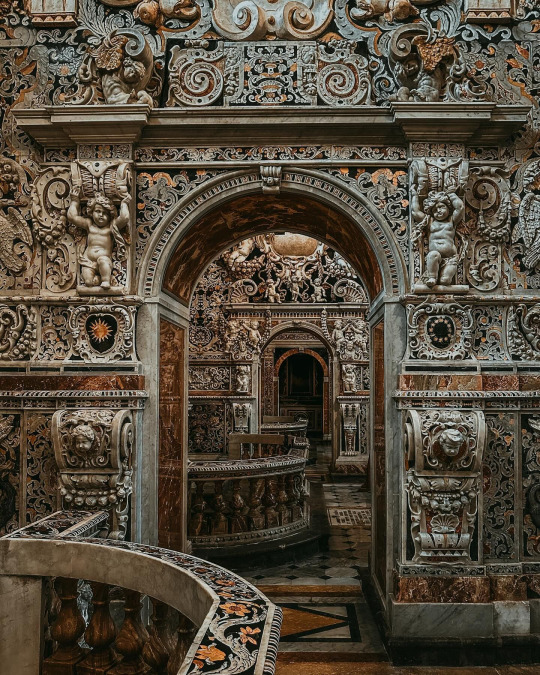
Chiesa del Gesù – Sicilian Baroque Masterpiece in Palermo, Italy
114 notes
·
View notes
Text
Scicli
It was crazy windy here today. Who knew there could be swells and whitecaps on The Mediterranean?
After a relaxing morning on the patio, a windy beach walk and another wonderful lunch, we went sightseeing in nearby Scicli. The town is just a 15 drive inland from Donnalucata.
Scicli is one of eight towns in southeast Sicily that are UNESCO named for their architecture. All were rebuilt after the devestating earthquake of 1693 in what is considered Sicilian Baroque style.
For fans of the Italian TV detective series Montalbano, that would be us, it is a particularly fun destination. Much of the series was filmed in Scicli.
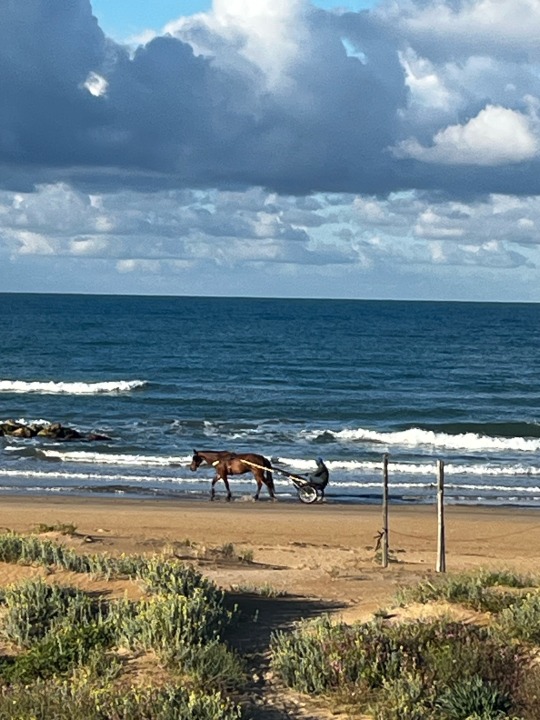
This horse and buggy happened by while we were enjoying our coffee this morning!

By noon, the wind was blowing up the surf - doesn’t look like much in the photo, but it was surfable!

The Scicli town hall was the police station in the Montalbano series.

Main Street in Scicli

The square with a monastery on the hill in the background. We tried to climb up to the monastery. We did a lot of climbing but never found the right staircase.
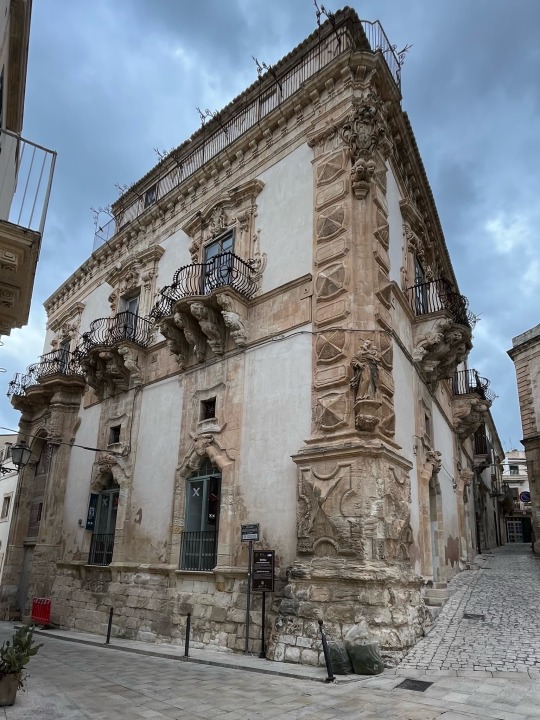
Palazzo Beneventano is a classic representation of the baroque style. This one dates to the 18th century and is decorated with both Moorish and Christian symbols

One of the many medieval alleys.

While we did not manage to reach the monastery, our climb did give us a great view back into Scicli and across to the old castle.
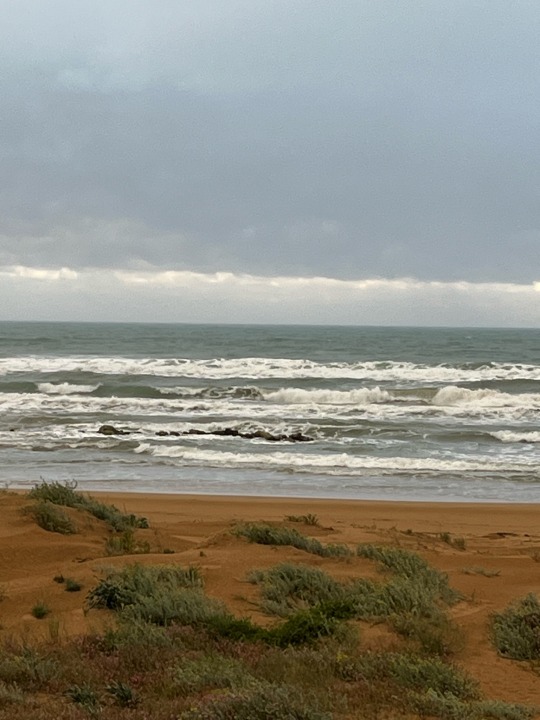
It’s 6pm, raining and blowing. Quite a different sea than we sipped coffee over this morning!
2 notes
·
View notes
Text
Late Baroque Towns of the Val di Noto

Embark with me on a digital journey through the UNESCO World Heritage site of the Late Baroque Towns of the Val di Noto in Sicily, Italy. Let's explore the sun-kissed landscapes and architectural gems that define this enchanting region, where late Baroque masterpieces rise like phoenixes from the ashes of earthquakes, leaving an indelible mark on the cultural tapestry of Sicily.
In 2002, the Late Baroque Towns of the Val di Noto received UNESCO World Heritage status, recognizing the exceptional cultural value of these towns. This designation celebrates the meticulous restoration efforts that have preserved the unique architectural heritage of the region.
Discover the story of the Val di Noto, a region that faced devastation due to a series of earthquakes in the late 17th century. In the aftermath, towns like Noto, Ragusa, and Modica were meticulously rebuilt in the opulent late Baroque style, showcasing a resilience that transformed tragedy into architectural triumph.
Wander through the streets of Noto, the crown jewel of the Val di Noto. Marvel at the harmonious blend of honey-colored limestone buildings adorned with ornate balconies, churches, and palaces. The Cathedral of Noto, dedicated to Saint Nicholas, stands as a sublime example of Sicilian Baroque grandeur.
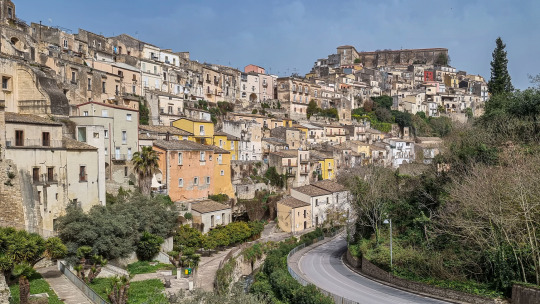
Explore Ragusa, a town split into Ragusa Ibla and Ragusa Superiore. Ragusa Ibla, the lower town, is a labyrinth of charming alleys and historic churches, while Ragusa Superiore boasts elegant squares and aristocratic palaces. The Cathedral of San Giorgio dominates the skyline with its grandeur.
Step into Scicli, a town that has served as a backdrop for numerous films and TV series. Its architectural wonders, such as the Church of San Matteo and the Palazzo Beneventano, create a cinematic canvas that transports visitors to a bygone era of opulence.
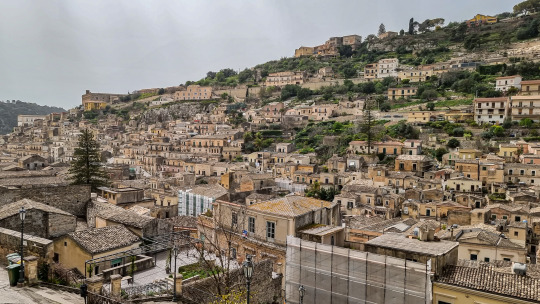
Indulge your senses in Modica, a town renowned for its traditional chocolate-making techniques and splendid Baroque architecture. Traverse the narrow streets and staircases leading to the Cathedral of San Giorgio, a masterpiece that captivates with its intricate facade.
Immerse yourself in the cultural festivals that celebrate the Baroque splendors of the Val di Noto. Events like the Infiorata in Noto, where intricate flower carpets adorn the streets, showcase the vibrant traditions and artistic richness of this UNESCO-listed region.
In conclusion, the Late Baroque Towns of the Val di Noto beckon us to a world where resilience, beauty, and culture converge. When you're ready for a digital exploration of Sicily's Baroque treasures, Val di Noto promises to enchant and inspire. 🏰🌺✨🇮🇹
#noto#valdinoto#baroque#splendor#italy#sicily#europe#unesco#world heritage#travel#architecture#culture#gem#valley#wonders
4 notes
·
View notes
Text
Page 2 - La Sicilia Arabo-Normana
Ciao amici e bienvenuti di nuevo nel mio taccuino! (Hi friends, and welcome back to my notebook!)
On this second page, I'll be jumping ahead in time from the last post and looking at the Arab-Norman era in Sicily.
First, let's start with the HISTORICAL CONTEXT
The North African Berber tribe (a.k.a. 'Arabs'), then the Normans (from Northern France) conquered Sicily in the 10 to 12th centuries. In this period, there was a peaceful coexistence between Muslims and Christians on the island that was practically unheard of at the time. For context, the Crusades were in full swing, with the first one starting in 1095. In this war to "protect the holy land", as it was advertised by the Pope at the centre of the Christian world, young men left in droves from European Kingdoms and headed for battlefields across the Middle East and North Africa.
Yet Sicily was a bastion of cultural exchange and socio-political harmony between these clashing worlds and traditions. Throughout history, the island stood in a vital position for military strategy, economic prosperity, and political exchange. This was particularly evident during the Crusades, as it was literally a bastion between the Christian and Muslim world.
Sicilians showed the world how opposing religious beliefs do not have to stand in the way of peaceful coexistence and even prosperity. The Arab population excelled in administration and logistical matters; the Normans were the political figureheads and Lords in each fiefdom, which upheld order and the economy; the Greeks on the coasts continued their commerce to and from the Arab world and further abroad. There was also a strong Jewish population known to be good bankers.
(*Disclaimer, please take all this with a grain of salt... It's not factually based evidence but rather generalisations based on my research.*)
Language-wise, it's a miracle people understood each other! First Arabic, then Latin, was spoken by the ruling court, but the Normans also introduced an early version of French. The general population simply spoke the language of the land from which they came, and that their parents taught them. Hence, there were still Greek-speaking Sicilians and even an Armenian emigrant population. The result was a cultural mosaic and the beginnings of the Sicilian dialect, still spoken by some elderly people today. I should highlight, though, that it wasn't all sunshine and roses, of course… There was always conflict when a new culture/tribe/empire conquered another... but this pattern was nothing new for the Sicilian population that was conquered multiple times in its history. Unfortunately, the population also suffered through widespread civil battles between fiefdoms throughout the centuries. Wealthy and powerful landowners could raise an army of local who lives off their lands.
All this infighting also brings much destruction and abandonment of wonderful villas and castles… in fact, we’ll see by the Renaissance period that very little architecture survived and much of what Sicily is known for, but tourists today, is the ‘new’ Baroque build… but I’m getting ahead of myself!
STAY TUNED FOR PART TWO!
<PREVIEW>
To get back to the point of my musings: the architectural heritage expresses this cultural exchange and coexistence. Let's look at two examples from this period: "Il palazzo La Zisa" and "Il Palazzo della Cuba".
0 notes
Text
Sicily Tour
Head on a superb Sicilian adventure from Catania to Taormina, including all travel, breakfast, dinner, guided tours, and local tastings Yourholidayoffers.co.uk From £1299.00 Depart��4 Oct 2025 Explore Sicily’s rich history, traditions, and vibrant culture on a seven-day tour. Begin in Siracusa and Noto, hubs of Sicilian Baroque architecture. Next, discover the ancient wonders of Taormina,…
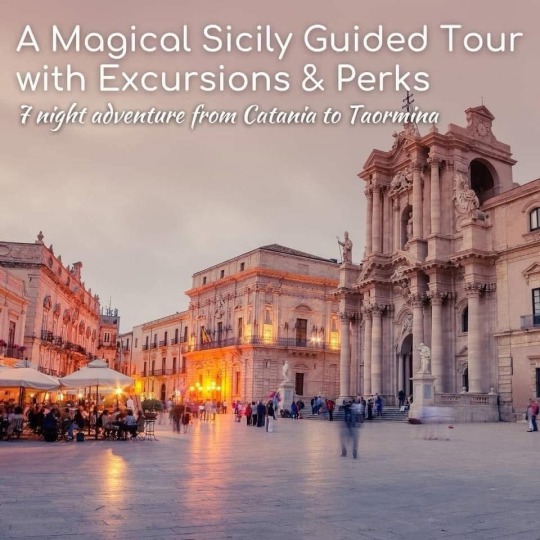
View On WordPress
0 notes
Text
Discover Opulence: Your Guide to Luxury Villa Rentals in Italy
Imagine waking up in a lavish villa overlooking the azure waters of the Mediterranean or the rolling vineyards of Chianti. Renting a villa in Italy allows travelers to indulge in luxury while enjoying the country’s rich history, culinary delights, and stunning landscapes. These villas often come with private pools, lush gardens, and spectacular views. Many properties also include concierge services, personal chefs, and housekeeping, ensuring guests experience relaxation without lifting a finger.
Choosing a villa to rent in Sicily, for example, not only offers luxury but also a chance to explore the island's ancient wonders and breathtaking coastline. Sicily, the largest Mediterranean island, is a treasure trove of Greek ruins, Baroque architecture, and delectable cuisine.
Explore the Charm of Sicily’s Luxury Villas
Sicily offers an unmatched blend of history, culture, and natural beauty. A villa to rent in Sicily can be found in various locations across the island, from coastal retreats to countryside estates. The villas are often designed to reflect the island’s unique architectural heritage, combining modern comforts with traditional charm.
Renting a villa in Sicily means waking up to panoramic views of the sea or Mount Etna, Europe's tallest active volcano. Picture lounging by a private infinity pool while savoring Sicilian wines and fresh seafood. Villas in this region often include sprawling terraces and shaded pergolas, perfect for al fresco dining.
In addition to luxurious amenities, staying in a villa allows you to explore Sicily’s many attractions at your own pace. Visit the historic city of Palermo, the ancient Greek theater in Taormina, or the Valley of the Temples in Agrigento. After a day of sightseeing, return to your villa and unwind in a serene setting that feels like your private oasis.
Tuscany: A Haven for Luxury Villa Rentals
For those who prefer a countryside escape, Tuscany offers some of the most sought-after luxury villa rentals in Italy. Known for its rolling hills, medieval towns, and world-class vineyards, Tuscany is a haven for wine lovers and history buffs alike. Villas here often feature rustic stone exteriors, expansive gardens, and infinity pools that overlook endless vistas.
Imagine a leisurely morning sipping espresso on a sun-drenched terrace, followed by a wine tour in Chianti. After a day of exploring quaint villages and sampling local delicacies, return to your villa to relax by the fireplace or enjoy a home-cooked meal prepared by a private chef. Tuscany’s villas are designed for those who appreciate the finer things in life, blending elegance with comfort.
Amalfi Coast: Seaside Luxury at Its Finest
Another prime destination for luxury villa rentals Italy is the Amalfi Coast. Known for its dramatic cliffs, turquoise waters, and charming coastal towns, this region is perfect for those seeking a glamorous seaside escape. The villas here are often perched on cliffs, offering breathtaking views of the sea.
Staying in a villa on the Amalfi Coast means easy access to famous towns like Positano, Ravello, and Amalfi. Spend your days exploring the coastline by boat, dining on fresh seafood, or simply lounging by the pool, soaking in the sun. The villas in this region often feature elegant interiors, spacious terraces, and private gardens, creating a truly luxurious atmosphere.
Why Choose a Luxury Villa Over a Hotel?
Opting for a villa instead of a hotel offers several advantages. Privacy is one of the most significant benefits, allowing guests to enjoy their vacation without the distractions of crowded hotel lobbies or shared amenities. A luxury villa rental in Italy also provides more space, making it ideal for families or groups of friends traveling together.
Moreover, villas often come with personalized services tailored to guests’ needs. Whether it’s arranging private tours, organizing cooking classes, or securing reservations at exclusive restaurants, the villa staff can create a bespoke experience that caters to your preferences. This level of attention to detail ensures a seamless and stress-free vacation.
Planning Your Perfect Villa Stay
When searching for the ideal villa to rent in Sicily or any other region in Italy, it’s essential to consider your preferences and needs. Do you prefer a beachfront property or a countryside retreat? Are you traveling with family or hosting an intimate gathering? Knowing what you want will help you find the perfect match.
Many villas offer flexible booking options and customizable experiences, allowing guests to tailor their stay. From organizing wine tastings and cooking lessons to arranging private transportation, every detail can be taken care of, ensuring a memorable and luxurious vacation.
0 notes
Text
Capturing Eternal Moments- Your Perfect Sicily Wedding Photographer
A wedding is a timeless celebration of love, and there’s no better backdrop for your special day than the stunning landscapes of Sicily. From its golden beaches and rolling vineyards to historic towns and breathtaking architecture, Sicily offers a perfect blend of natural beauty and rich culture. To immortalize your wedding, you need a skilled Sicily wedding photographer who can capture the essence of your day, ensuring every moment becomes a cherished memory.
Why Choose Sicily for Your Wedding?
Sicily is an island where romance comes alive. Picture exchanging vows with the sparkling Mediterranean Sea as your witness, or saying "I do" in the shadow of Mount Etna, surrounded by lush vineyards and ancient ruins. Whether you choose the baroque charm of Noto, the cliffside beauty of Taormina, or the rustic elegance of a countryside estate, Sicily provides unparalleled scenery for weddings. A skilled wedding photographer will highlight the natural light, vibrant colors, and authentic emotions that Sicily brings to your celebration.
What to Expect from a Sicily Wedding Photographer
A professional Sicily wedding photographer brings more than just a camera to your special day—they bring artistry, storytelling, and a deep understanding of the island's unique locations. Here’s what you can expect:
1. Expert Knowledge of Sicily’s Best Locations
Whether it’s a quaint cobblestone street, a golden hour vineyard, or the grandeur of a seaside villa, your photographer will know the most picturesque spots. Their local knowledge ensures every frame tells a story that’s unique to your Sicilian wedding.
2. Tailored Approach to Your Love Story
Every couple has a unique journey, and your wedding photos should reflect that. A great photographer will take the time to understand your vision, ensuring their work captures your personalities, emotions, and the intimate moments of your day.
3. Mastery of Light and Emotion
Sicily’s light is magical, especially during the golden hours. A skilled photographer will use this to create soft, romantic, and timeless images. Their ability to capture genuine emotions—from the tears of joy during your vows to the laughter on the dance floor—ensures your album will be filled with heartfelt memories.
The Importance of Pre-Wedding Consultation
A pre-wedding consultation with your photographer is essential for discussing your preferences and planning the shots that matter most to you. It’s also an opportunity to build a connection with your photographer, ensuring you feel comfortable and natural on your big day.
A Visual Legacy of Your Love
Your wedding photos are more than just pictures—they’re a legacy you’ll treasure forever. Whether displayed in an elegant album, framed on your wall, or shared digitally with loved ones, these images will take you back to the joy and romance of your Sicilian wedding day.
Begin Your Sicilian Love Story
Your wedding day is a once-in-a-lifetime event, and Sicily provides the perfect canvas for your love story. With a professional Sicily wedding photographer by your side, you can relax and immerse yourself in every precious moment, knowing your memories are in expert hands.
Make your Sicilian wedding unforgettable by choosing a photographer who will create art out of your love, ensuring your special day lives on in stunning, timeless images.
0 notes
Text
Discover the Flavors of Sicily: A Guide to Unforgettable Sicily Food Tours
Sicily is a paradise for food lovers, where culinary traditions and cultural heritage blend seamlessly to create a unique gastronomic experience. For those looking to immerse themselves in the authentic flavors of this Mediterranean island, Sicily food tours are the perfect way to savor every bite while exploring the picturesque landscapes and historic towns. Sicily Food Tours Whether you're an adventurous foodie or simply a traveler seeking to deepen your connection with Sicilian culture, these tours offer an unforgettable journey through the island's diverse and delicious cuisine.
What to Expect on a Sicily Food Tour
A well-curated food tour in Sicily goes beyond just tasting local dishes—it’s about understanding the history and passion behind each ingredient. From bustling local markets to family-owned farms, and traditional bakeries to award-winning wineries, you’ll get an insider’s view of Sicily’s vibrant food scene. Expect to sample freshly made pasta, seafood caught from the island’s pristine waters, and signature Sicilian sweets like cannoli and cassata.
You’ll also have the chance to visit local vineyards, where you can sip on world-renowned wines like Nero d'Avola and Grillo, or olive groves that produce some of the purest extra virgin olive oil in the world. Each stop provides an opportunity to meet local artisans, chefs, and winemakers who are passionate about preserving the island’s culinary heritage.
Highlights of Sicily's Culinary Regions
Palermo: The bustling capital is a must-visit for street food enthusiasts. Here, you’ll find traditional delights like arancini (fried rice balls), panelle (chickpea fritters), and sfincione (a thick, spongy pizza). A tour through Palermo’s vibrant markets such as Vucciria or Ballarò is a feast for the senses, filled with colorful stalls offering fresh produce, seafood, and spices.
Trapani and Marsala: Known for salt pans and high-quality seafood, the Trapani region is also famous for its pesto alla trapanese, a unique twist on the classic pesto made with almonds and tomatoes. Marsala, on the other hand, is celebrated for its fortified wine, perfect for pairing with local cheeses and desserts.
Ragusa and Modica: These baroque towns are not only architectural gems but also culinary hotspots. Modica is known for its ancient chocolate-making tradition, where chocolate is crafted using centuries-old methods without additional fats or dairy. Ragusa, with its rich dairy heritage, offers mouthwatering cheeses such as Ragusano DOP.
Etna and Catania: The fertile volcanic soil around Mount Etna produces some of Sicily’s most exceptional wines, honey, and pistachios. A food tour here would be incomplete without a visit to a local vineyard, where you can taste Etna DOC wines against the backdrop of the majestic volcano.
Why Choose a Sicily Food Tour?
Sicily food tours provide more than just delicious memories—they offer a chance to connect with the island’s rich cultural identity. By exploring regional dishes and local specialties, you’ll gain a deeper appreciation for Sicily’s complex history, influenced by Greek, Arab, Norman, and Spanish rule over centuries. Whether you’re sampling pasta alla Norma in Catania or savoring caponata along the coast, each bite tells a story of resilience, creativity, and community.
For those looking to elevate their culinary adventure, consider booking a food and wine tour through Go Inside Sicily’s Food and Wine Tours. Sicily Food Tours These thoughtfully designed tours ensure that you experience the best of Sicily’s cuisine, guided by local experts who are passionate about sharing the island’s hidden treasures.
From the markets of Palermo to the vineyards of Etna, let Sicily's diverse culinary landscape surprise and delight you. Enjoy an authentic taste of Sicily that you won’t find anywhere else!
0 notes
Text
Sicily Luxury Travel - Discover the Island's Hidden Gems
Nestled in the heart of the Mediterranean, Sicily is a captivating island that seamlessly blends history, culture, and natural beauty. From its stunning coastline to its ancient ruins, Sicily offers a diverse range of experiences that cater to every traveler's desires. For those seeking a truly exquisite experience, Sicily luxury travel promises an unforgettable journey through the island's most enchanting locales.
Unparalleled Accommodations
A trip to Sicily is incomplete without indulging in the island's opulent accommodations. From lavish seaside resorts to charming boutique hotels nestled in historic towns, Sicily luxury travel offers a wide array of accommodation options that cater to the discerning traveler. Imagine waking up to breathtaking views of the Mediterranean from your private villa perched on a cliff or relaxing in the elegant surroundings of a restored Baroque palace. These luxurious lodgings provide the perfect blend of comfort and sophistication, ensuring that your stay is as memorable as the island itself.

Gastronomic Delights
No exploration of Sicily would be complete without savoring its world-renowned cuisine. Known for its rich flavors and fresh ingredients, Sicilian cuisine is a feast for the senses. Luxury travelers can embark on a culinary journey that includes private cooking classes with renowned chefs, exclusive wine tastings at picturesque vineyards, and dining experiences at Michelin-starred restaurants. Indulge in delectable dishes such as arancini, cannoli, and the iconic Sicilian pizza, all prepared with the finest local ingredients. With Sicily luxury travel, you can immerse yourself in the island's culinary traditions, experiencing flavors that will linger in your memory long after you've departed.
Cultural Riches
Sicily's rich history and cultural heritage provide an endless array of opportunities for exploration. From the ancient Greek temples of Agrigento to the magnificent Norman architecture of Palermo, the island is a treasure trove of historical wonders. Luxury travelers can enjoy private guided tours of these iconic sites, gaining insight into Sicily's fascinating past from knowledgeable experts. Discover the artistic masterpieces of the region, from Byzantine mosaics to Renaissance paintings, all while exploring charming villages that seem frozen in time. With Sicily luxury travel, you'll have the chance to delve into the island's cultural tapestry at your own pace, uncovering hidden gems that make Sicily truly unique.

Coastal Escapes
Sicily boasts some of the most stunning coastlines in the world, with crystal-clear waters and picturesque beaches that beckon luxury travelers seeking relaxation and adventure. Charter a private yacht to explore the Aeolian Islands, where you can swim in secluded coves and bask in the Mediterranean sun. Dive into the azure waters for a snorkeling adventure or simply unwind on a pristine beach with a cocktail in hand. Whether you prefer a tranquil retreat or an exhilarating maritime adventure, Sicily luxury travel offers an array of coastal experiences that cater to every preference.
Sicily luxury travel promises an unparalleled experience that combines opulence, culture, and natural beauty. Whether you're indulging in gourmet cuisine, exploring historical sites, or relaxing by the sea, Sicily offers a truly unforgettable journey that caters to the most discerning of travelers. Embark on a luxurious adventure to Sicily and discover the island's hidden treasures that await your exploration.
0 notes
Text
Capturing Eternal Love in Sicily- The Essence of Sicilian Wedding Photography
Your wedding day is a monumental event, a day filled with joy, love, and unforgettable moments. Choosing the right wedding photographer is crucial in preserving these precious memories, and if you're planning a wedding in Sicily, you're in for a treat. Sicily, with its rich history, stunning landscapes, and vibrant culture, provides a perfect backdrop for your wedding. A skilled Sicily wedding photographer will not only capture the beauty of the location but also the essence of your love story.
The Charm of Sicily
Sicily is an island of contrasts, from the rugged beauty of Mount Etna to the serene beaches of Taormina. The island's diverse landscapes provide endless possibilities for breathtaking wedding photos. Imagine exchanging vows against the backdrop of an ancient Greek temple in Agrigento or a picturesque vineyard in the rolling hills of the countryside. Each location tells a unique story, and a talented wedding photographer will know how to weave these stories into your wedding album.
The island's rich cultural heritage is another aspect that adds depth to your wedding photos. From the vibrant markets of Palermo to the baroque architecture of Noto, Sicily's charm is in its details. A skilled photographer will capture not just the big moments but also the subtle nuances that make your wedding day unique. The flicker of candlelight in a rustic chapel, the laughter shared over a traditional Sicilian feast, and the joyous dances under the stars – all these moments are treasures waiting to be captured.
The Role of a Wedding Photographer
A wedding photographer's role goes beyond merely taking pictures. They are storytellers, capturing the emotions, the candid moments, and the beauty of your special day. A Sicily wedding photographer brings an added layer of expertise by understanding the island's unique lighting, weather conditions, and iconic locations. Their local knowledge can be invaluable in planning the perfect shots.
When selecting a wedding photographer in Sicily, it's essential to review their portfolio. Look for a style that resonates with you, whether it's classic, contemporary, or a blend of both. Pay attention to how they handle different lighting conditions, their composition skills, and their ability to capture candid moments. A good photographer will have a diverse portfolio that showcases their versatility and creativity.
The Importance of Connection
One of the most important aspects of choosing a wedding photographer is the connection you feel with them. Your photographer will be with you throughout your wedding day, capturing intimate moments and significant milestones. It's crucial to choose someone who makes you feel comfortable and understands your vision for the day. A pre-wedding consultation can help establish this connection, allowing you to discuss your preferences, any specific shots you want, and the overall style you're aiming for.
Capturing the Essence of Your Love
A great wedding photographer will capture the essence of your love story, from the nervous excitement before the ceremony to the joyous celebration with family and friends. They will be able to anticipate moments, capturing the spontaneous laughter, the tearful glances, and the heartfelt embraces. These are the moments that make your wedding day truly unique and memorable.
In Sicily, the golden hour – the time just before sunset – offers magical lighting that can elevate your wedding photos. The warm, soft light creates a romantic and ethereal atmosphere, perfect for capturing intimate portraits and scenic shots. An experienced Sicily wedding photographer will know how to make the most of this enchanting time of day.
Preserving Memories
Your wedding photos are more than just images; they are memories that you'll cherish for a lifetime. They are a testament to your love and the beginning of your journey together. Investing in a skilled wedding photographer ensures that these memories are beautifully captured and preserved.
In conclusion, a Sicily wedding photographer plays a vital role in making your wedding day unforgettable. Their expertise, combined with the stunning backdrop of Sicily, will result in a wedding album that you'll treasure forever. So, take your time in choosing the right photographer, someone who understands your vision and can beautifully capture the magic of your special day in Sicily.
0 notes
Text
Discovering Malta from History to Adventure
Malta, nestled in the heart of the Mediterranean Sea, is a captivating blend of history, culture, and natural beauty, offering a wealth of activities for those wondering what to do in Malta. This archipelago nation boasts a rich tapestry of influences from Phoenician to British, which is vividly reflected in its architecture, cuisine, and traditions.
Valletta the Fortress City
Start your journey in Valletta, Malta's capital and a UNESCO World Heritage site renowned for its 16th-century architecture. Explore the imposing St. John's Co-Cathedral, adorned with Caravaggio masterpieces, and wander through the city's labyrinthine streets lined with palaces and churches. Don't miss the Grand Master's Palace and its State Rooms, showcasing Malta's aristocratic past.
Mdina the Silent City
Step back in time in Mdina, a fortified medieval town perched on a hilltop. Known as the Silent City, Mdina's narrow alleys and Baroque architecture offer a serene escape from modernity. Visit the Mdina Dungeons for a glimpse into Malta's darker history or enjoy panoramic views from the Bastion Square.
Hagar Qim and Mnajdra Temples
Delve into Malta's prehistoric roots at the Hagar Qim and Mnajdra Temples, dating back over 5,000 years. These Neolithic temples, marvels of ancient engineering, are among the oldest freestanding structures in the world and provide a fascinating glimpse into Malta's early civilization.
The Three Cities
Explore Vittoriosa, Senglea, and Cospicua—collectively known as the Three Cities—where the Knights of St. John once fortified their positions. Wander through narrow streets lined with historic buildings and visit the Inquisitor's Palace in Vittoriosa for insights into Malta's religious and judicial past.
Blue Lagoon, Comino
Escape to the Blue Lagoon on the tiny island of Comino, renowned for its crystal-clear turquoise waters and white sandy beaches, making it a must-visit destination when considering what to do in Malta. Ideal for swimming, snorkeling, and sunbathing, this idyllic spot is a paradise for water sports enthusiasts and nature lovers alike.

Gozo Island
Take a short ferry ride to Gozo, Malta's tranquil sister island, where rugged landscapes and picturesque villages await. Visit the Azure Window (formerly), explore the citadel in Victoria (Rabat), or unwind on Ramla Bay's red sandy beach. Gozo offers a slower pace of life and a glimpse into traditional Maltese culture.
Dingli Cliffs
For breathtaking vistas, head to the Dingli Cliffs on Malta's western coast, offering panoramic views of the Mediterranean Sea. Take a leisurely stroll along the cliff edge or pack a picnic to enjoy against the backdrop of stunning sunsets—an ideal spot for photographers and nature enthusiasts.
Maltese Cuisine
Savor the flavors of Maltese cuisine, influenced by Sicilian, North African, and Middle Eastern traditions, as you explore what to do in Malta. Try pastizzi (flaky pastry filled with ricotta or peas), ftira (traditional bread topped with local ingredients), and fenkata (rabbit stew), washed down with local wines and liqueurs such as Kinnie and Cisk Lager.
Feasts and Festivals
Participate in Malta's vibrant religious festivals, known as festi, celebrating the patron saints of local parishes with processions, fireworks, and traditional band marches. Experience the lively atmosphere of festa season, particularly in summer, when communities come together to honor their heritage and faith.
Valletta Markets
Indulge in a shopping spree at Valletta's markets, where you can find everything from local handicrafts to designer goods. Visit the Merchant Street Market for antiques and collectibles, or explore the Craft Village in Ta' Qali for handmade lace, pottery, and traditional Maltese glassware.
Diving and Snorkeling
Discover Malta's underwater world through diving and snorkeling excursions. The islands boast clear waters, vibrant marine life, and numerous dive sites, including wreck dives and coral reefs. Explore the Blue Hole in Gozo or dive the Um El Faroud wreck off the coast of Malta for unforgettable underwater experiences.
Boat Tours and Cruises
Embark on a boat tour or cruise around Malta's coastline to appreciate its stunning vistas from the sea. Choose from sailing trips, catamaran cruises, or traditional Maltese dghajsa rides, offering unique perspectives of coastal cliffs, hidden caves, and secluded beaches.
Spa Retreats
Unwind and rejuvenate at one of Malta's luxurious spa retreats, where you can indulge in massages, facials, and wellness treatments amidst tranquil surroundings. Many hotels and resorts offer spa packages that combine relaxation with stunning views of the Mediterranean Sea.
Majjistral Nature and History Park
Explore Majjistral Nature and History Park, Malta's largest natural reserve located on the northwest coast. Hike scenic trails through rugged landscapes, spot native wildlife, and admire panoramic views of the Mediterranean Sea. The park also offers educational programs and guided tours for nature enthusiasts.
Conclusion
What to do in Malta, from ancient temples to vibrant nightlife, Malta offers a wealth of experiences for travelers seeking history, culture, and natural beauty. Whether you're exploring historic Valletta, relaxing on Comino's Blue Lagoon, or indulging in Maltese cuisine, each corner of this Mediterranean gem invites discovery and adventure.
1 note
·
View note
Text
Catania
Municipality in Sicily, Italy
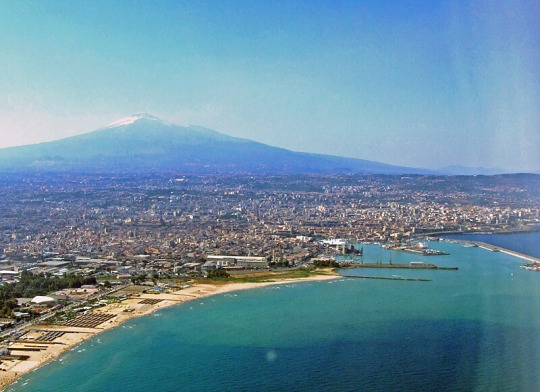
Catania skyline
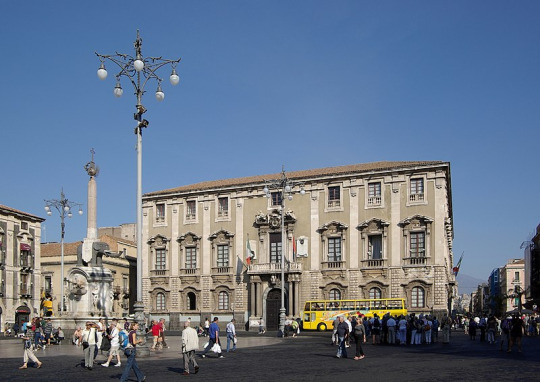
Piazza Duomo (Cathedral Square)
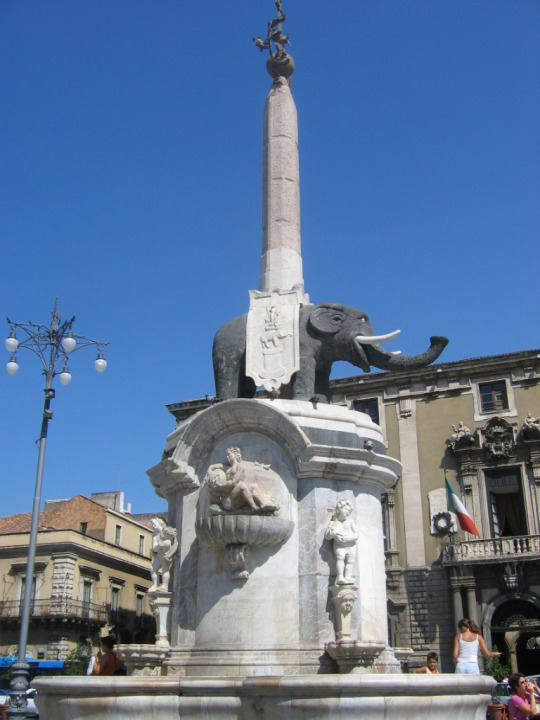
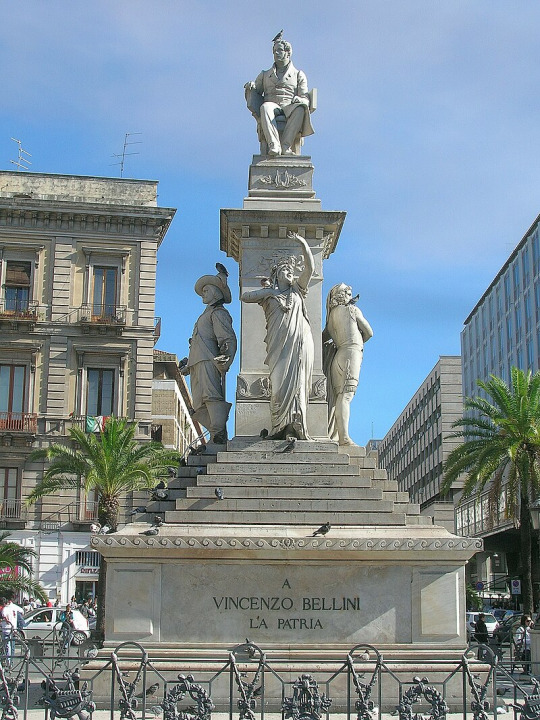

u Liotru, symbol of Catania, Stesicoro Square and Bellini's Monument (Piazza Stesicoro – Monumento a Vincenzo Bellini), An aerial view of the port of Catania
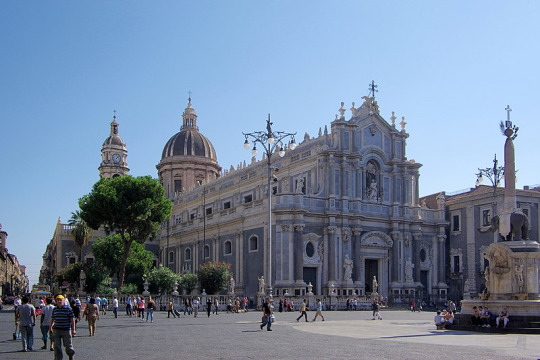
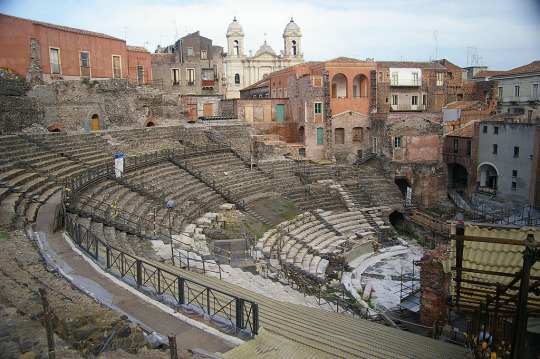
Giovanni Battista Vaccarini's Duomo façade (1736) is an example of the city's Sicilian Baroque architecture.
Church of St Francis of Assisi backs Cavea of the Greek-Roman Theatre

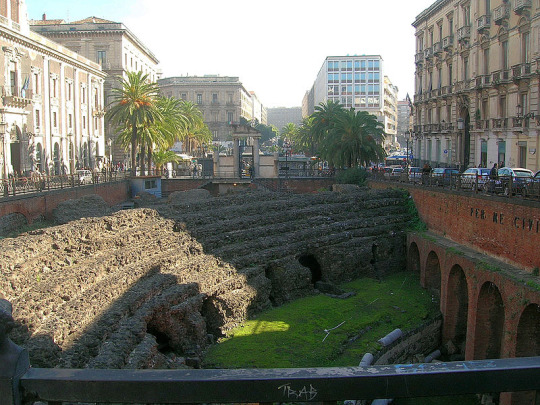

Odeon, Roman Amphitheatre, Roman Thermae of Santa Maria dell'Indirizzo
Catania is an ancient port city on Sicily's east coast. It sits at the foot of Mt. Etna, an active volcano with trails leading up to the summit. The city's wide central square, Piazza del Duomo, features the whimsical Fontana dell'Elefante statue and richly decorated Catania Cathedral. In the southwest corner of the square, La Pescheria weekday fish market is a rowdy spectacle surrounded by seafood restaurants
Area: 180 km²
Population: 313,396 (2017) Istat
Dialing code: 095
Patron saint: Agatha of Sicily
Catania - Wikipedia
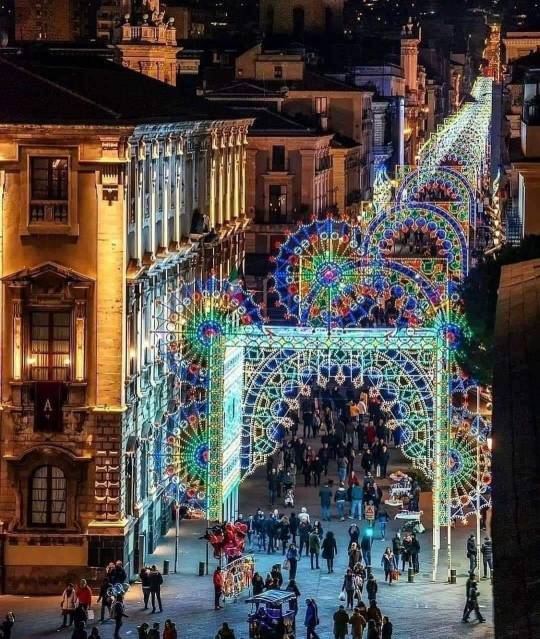
C a t a n i a
376 notes
·
View notes
Text
Catania
This morning we made a four hour train trip to Catania, a small city on the eastern coast of Sicily. The center of Sicily is high, green, rolling hills, farms and almost no roads. Neither of us opened our books. The scenery was so captivating.
Catania is charming. It feels quiet and quaint after the roar of Palermo. There is a lovely city center and both white and black sand beaches. We had a wonderful lunch at a famous Catanian Patisserie , Savia. (more on food of Sicily later). Then we checked out the sights.
Saint Agatha was born and martyred here, so she is the local favorite. The Cathedral and also the largest church are both dedicated to her. The other twenty or so churches also give her a mention.
Another famous son of Catania is the opera composer Bellini. Anything not named after St Agatha is named after Bellini!
Catania is at the foot of Mt Etna, Europe’s largest active volcano. An eruption in 1669 wiped out the city. The cathedral was only partially damaged. The castle moat was filled with lava. The entire city was immediately rebuilt, so most of the city’s architecture dates to the early 1700’s although there are Greek and Roman ruins that have been excavated from beneath the lava stone.
Almost everything in the town is made from lava stone. The building foundations are made of cut lava stone and the roads are paved with lava blocks. The color of much of the city is noticeably grey. And it’s lovely.
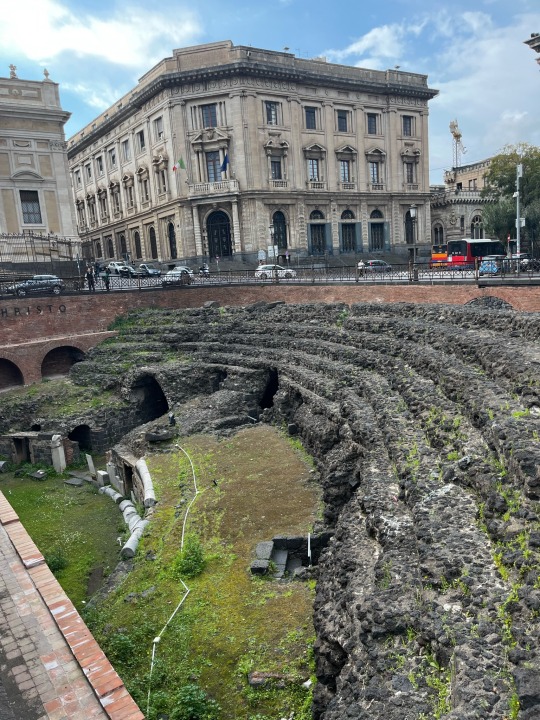
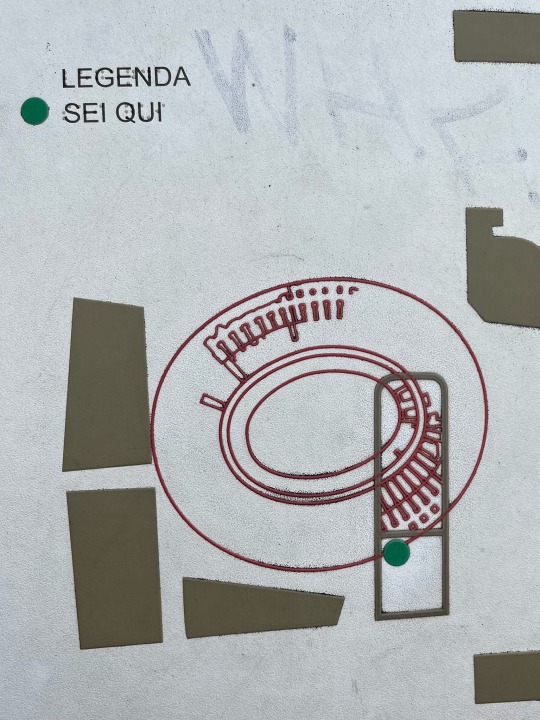
Under the town center is a Roman arena. It once held 15,000 fans. It was buried beneath volcanic eruptions and centuries of rebuilding. This tiny slice is now exposed.

The main piazza, Cathedral Square, is built around a central fountain which features an elephant, the symbol of the city. The elephant, carrying an Egyptian obelisk, was supposed to imitate the Bernini elephant in Rome. For some reason it has a very strange smile on its face. It is a terrible statue. The obelisk is said to have magical powers that keep Mt Etna from erupting! Today it is also surrounded by a fence as the fountain is being renovated. But the square is beautiful.

This is a photo that was hanging on the barrier. It gives a better sense of the square.
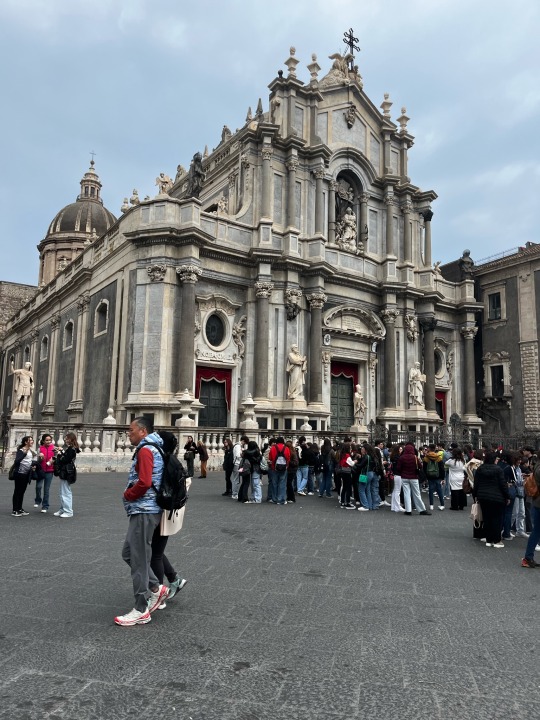
The Cathedral, and all of the other churches in the city, is Sicilian Baroque style. It is dedicated, of course, to St Agatha of Catania.

Castellón Ursino is a 13th century Castle that is now a museum. It withstood the 1669 eruption…
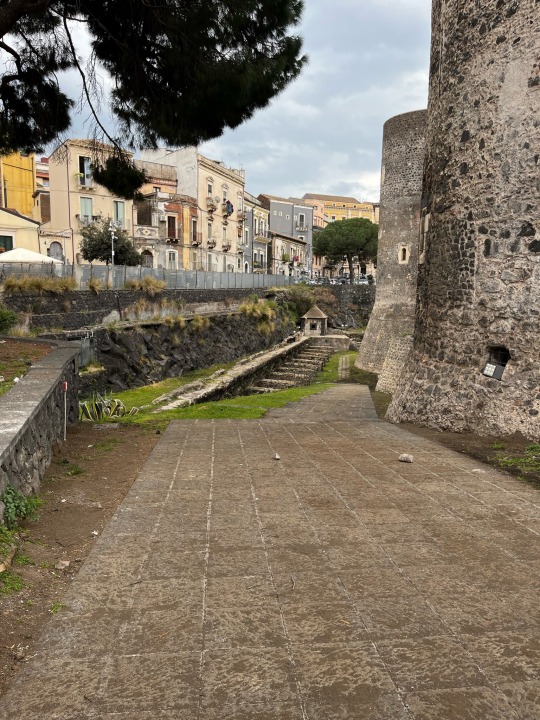
…but it’s moat and surrounds were buried in lava. It stands a little shorter today than it did before the eruption.

This beautiful stretch of street is filled with churches and monasteries, all built after the eruption

The Bellini Theatre was built in the 1800’s. Bellini lived across the street. His palazzo is now a museum.
The sky looks threatening but it is not supposed to rain. We’ll see.
2 notes
·
View notes
Photo





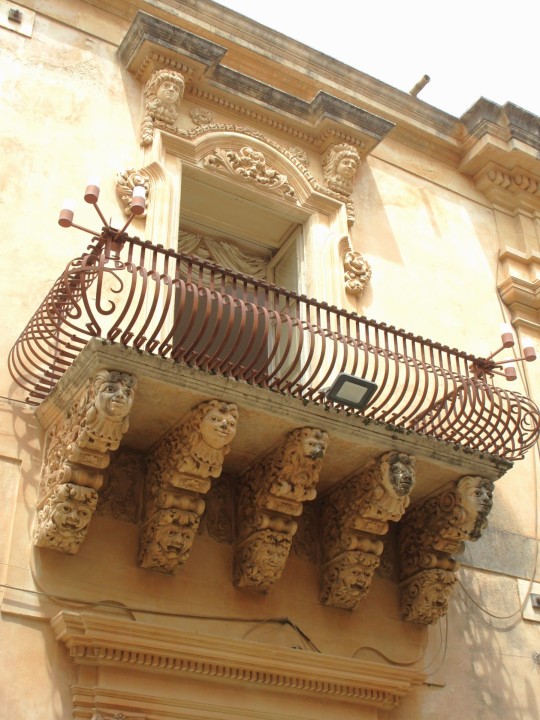


The 18th century Palazzo Nicolaci di Villadorata in Noto, Sicily, is known for these elaborately carved brackets supporting the balconies.
Photos by Charles Reeza
#stone carving#architectural details#Sicilian Baroque architecture#Italy#Val di Noto#Sicilia#travel photography
15 notes
·
View notes
Photo


Ayikkara Muhyidheen Masjid / Kannur, Malabar
#architecture#imperial architecture#kerala architecture#malabar#malabar manual#indian architecture#ottoman architecture#Sicilian Baroque#baroque architecture
4 notes
·
View notes